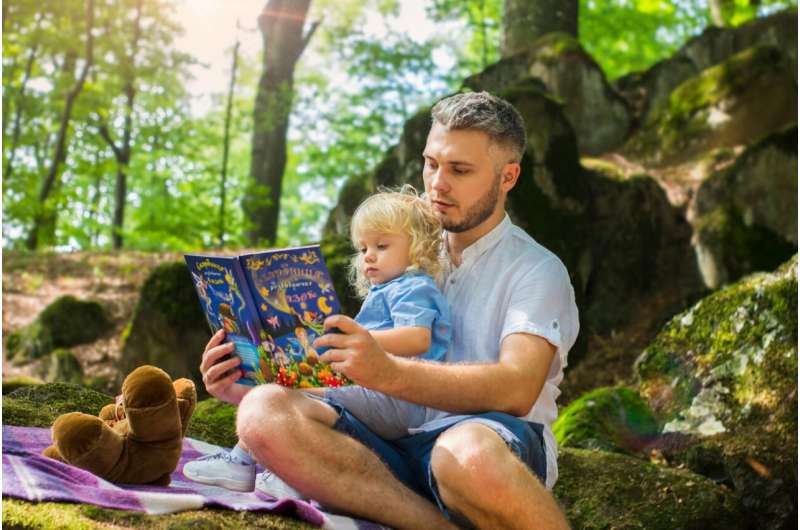This article has been reviewed according to Science X's editorial process and policies. Editors have highlighted the following attributes while ensuring the content's credibility:
fact-checked
peer-reviewed publication
trusted source
proofread
How reading helps young children learn about the concept of pain

A tumble from a bike, a graze on the knee, or a common flu vaccination—how children experience pain can significantly influence how they react and respond to pain into adolescence and adulthood.
Now, a new study from the University of South Australia published in The Journal of Pain shows how young children learn about the concept of pain through reading, and it's helping to promote children's empathy, emotional development, and understand socio-cultural norms.
Conducted by Dr. Sarah Wallwork, the study investigated how parents and caregivers interact with children when reading picture books that depict pain or injury.
Observing 20 families and young children (aged 3–6) researchers found that reading books frequently prompted interactions about pain and injury through the characters' experiences. These included talking about causes of pain and injury, what to do when you're injured or in pain, and the promotion of empathy and prosocial skills.
Dr. Wallwork says that the study highlights the value of shared reading experiences and how parents can support their children to learn about pain-related concepts during a critical developmental period.
"Shared reading experiences present an important opportunity to connect with your child, and in this study, an opportunity to talk about pain and injury," Dr. Wallwork says.
"Through the storybooks' characters we found parents and caregivers would pause to further explain what was happening within the pages.
"For example, when Zog the dragon (in Julia Donaldson's book Zog) bumps his head and gets a bandage, the parent said 'Whoopsie daisy, because dragons are still learning, aren't they?' which linked the injury with learning and that it was normal to make mistakes when you were learning.
"Similarly, when Zog flew into a tree, the parent said 'Oh no! That would've hurt, wouldn't it?' which prompted the child to think about how painful or sore or hurt Zog might be. In this way, the parent is teaching the child about empathy, and appropriate responses.
"Conversely, when pain and injury were depicted in a light-hearted or unrealistic way, parents often responded in a way that showed they were entertained by the character's misfortune. And while this may seem harmless, the action could inadvertently socialize children to think that accidents and injuries can be funny.
"Learning appropriate and empathetic responses to pain and injury in childhood are valuable for many reasons: they help children learn to understand that some pain is fleeting, that some injuries need the help of others, and that injury and pain are not always intertwined.
"Shared reading of picture books is an ideal way to talk about concepts around pain due to its didactic nature—as opposed to children's television and movies, where children are often watching on their own and become passive recipients of information.
"Connecting the narrative and the characters' experiences to a child's own experiences makes these concepts more relatable for children.
"Essentially, we're translating learning from the picture books into their own real-life. It all starts with the turn of a page."
More information: Sarah B. Wallwork et al, Harnessing Children's Picture Books to Socialize Children About Pain and Injury: A Qualitative Study, The Journal of Pain (2024). DOI: 10.1016/j.jpain.2024.03.016





















